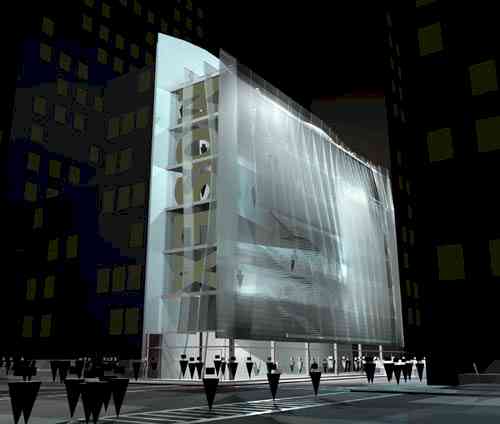M O S E X

Street view, computer rendering
SHoP/Sharples Holden Pasquarelli began the Museum of Sex project by first asking some questions. Is there a relationship between form and performance that could aid in the design of a space for human sexuality? A relationship that does not utilize a bifurcating model of male/female, straight/gay, spectator/participant, but a resilient and ambiguous correlation between desires and an architecture that allows a museum of sex to reevaluate ideas and concepts? How would we use the body, form, position, fluidity, tracing, figure, presence and space to provide a solution for our clients where a symbiosis between a cultural institution and an economic engine, display and consumption, program and event and thought and process will emerge? Imagine how this will expand into fashion, food, culture and play? The site of the future Museum of Sex is a narrow corner lot on Fifth Avenue with views of the Empire State Building. The extremely narrow floor plan suggested the use of a layered organizational device, and the generative concepts of organic form, tactile expression, exposure and concealment led to thinking of this device as "skin". This skin is made up of layered surfaces with specific functions, defining the physical and conceptual parti of the building. The particular placement and curvature of the walls are designed for optimal performance as dictated by program requirements such as circulation, exhibition, flexibility, or lighting. Form-making therefore becomes symbiotic with the fulfillment of need. The innermost wall conceals necessary building infrastructure within a continuous sculptural shape. The exterior envelope is a play of several translucent layers of steel and glass, sometimes fusing in a readable thickness, sometimes peeling apart to allow vertical movement, light filtration or to house displays. With variations of transparency, the fašade becomes part of a flirtatous game played between the building and the city. The street level is transparent, inviting entry with nothing to hide. The public is invited to peek behind the veil, and become part of the architecture and the exhibition.
|